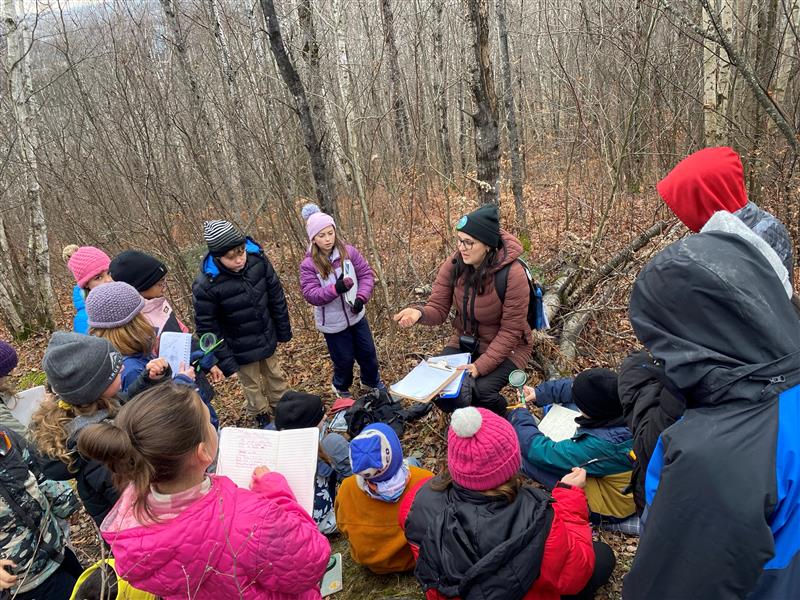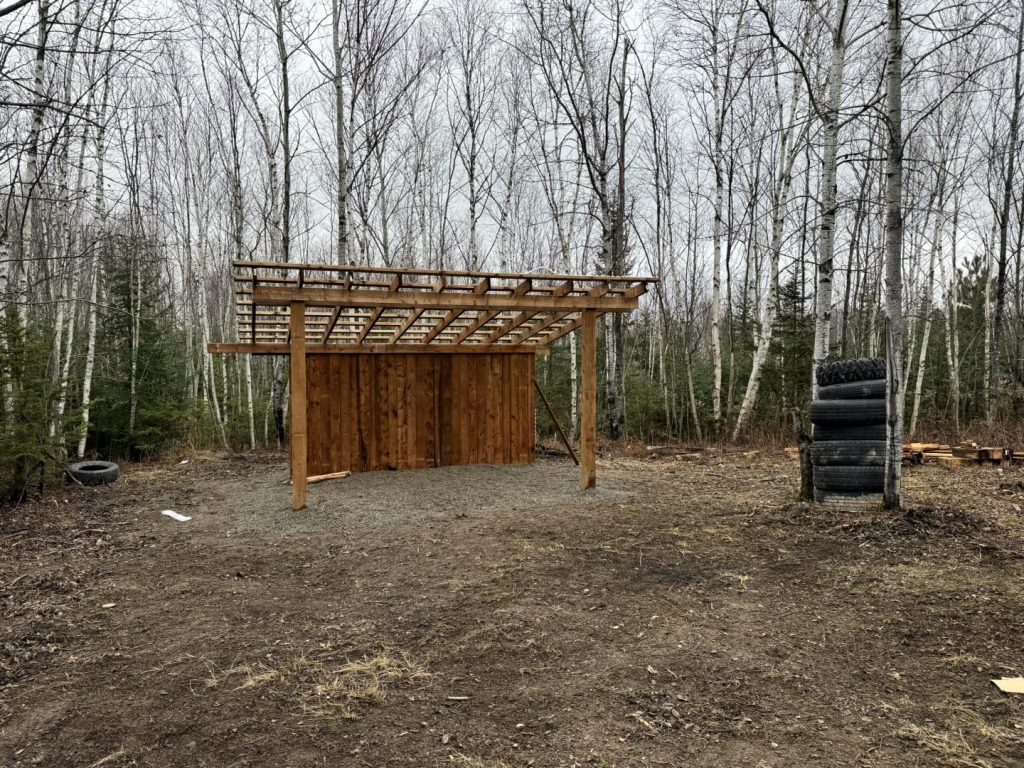
“Take it outside!”
It’s a phrase familiar to both flustered parents and overly energetic children in equal measure.
That youthful energy is known to our teachers too. But instead of quelling it outright, educators in our schools have harnessed it for learning, thanks to our outdoor classrooms and a dedication to using the region’s abundant nature as a teaching aid.
Since 2014, schools across the district have been building outdoor classrooms on their properties, in an effort to promote hands-on learning in nature while giving students a break from the desks, walls, and windows of the standard classroom—and, perhaps, to burn off some youthful energy too.
There are currently 39 outdoor classrooms among the district’s 70 schools, each with a unique configuration to accommodate location. Some commonalities in many of the classrooms are bench seating made from dead trees, wooden shelters, and a structure to support a blackboard or whiteboard.
Edmundston’s Saint Mary’s Academy is the latest ASD-W school to get an outdoor classroom, just this year.
“We built a teacher stand and 13 or 14 benches,” said ASD-W Health and Physical Education Coordinator Ross Campbell, who supervised the classroom construction with help from students and district staff. “We used dead standing trees for the bench bases and the slabs were donated by former director of schools, Wayne Annis, from his sawmill.”
As with all of our schools, the dedication to using the outdoors as a teaching tool is genuine at Saint Mary’s Academy. “I was encouraged to be outside and I really like that,” said Teacher Vanessa Després. “Miss [SMA Principal Julie] Michaud was all for it.”
Said Després, “I just wanted to do everything outside but didn’t know how.”
To learn what she needed to know, Després and Michaud visited the Environmental School in Maple Ridge, B.C., after which Després completed the Child & Nature Alliance of Canada’s Forest and Nature Practitioner’s Course.

The course is a year-long certificate program for educators that features an in-person outdoor learning component, coupled with online coursework. The goal of program, according to the organization, is “to support high-quality Forest/Nature School practice and programming through evidence-based, practical, and inspiring professional learning opportunities, community building, and advocacy.”
Després uses items in nature to teach important concepts: “We’ll count the fir trees, the birch trees, the pine trees, and then graph that. We’ll find nine mushrooms–five red and four orange–so we have to find an equivalent fraction. Then we break each mushroom in two, so you have 10 red and eight orange pieces. Then we work our fractions in real life.”
Saint Mary’s students say…
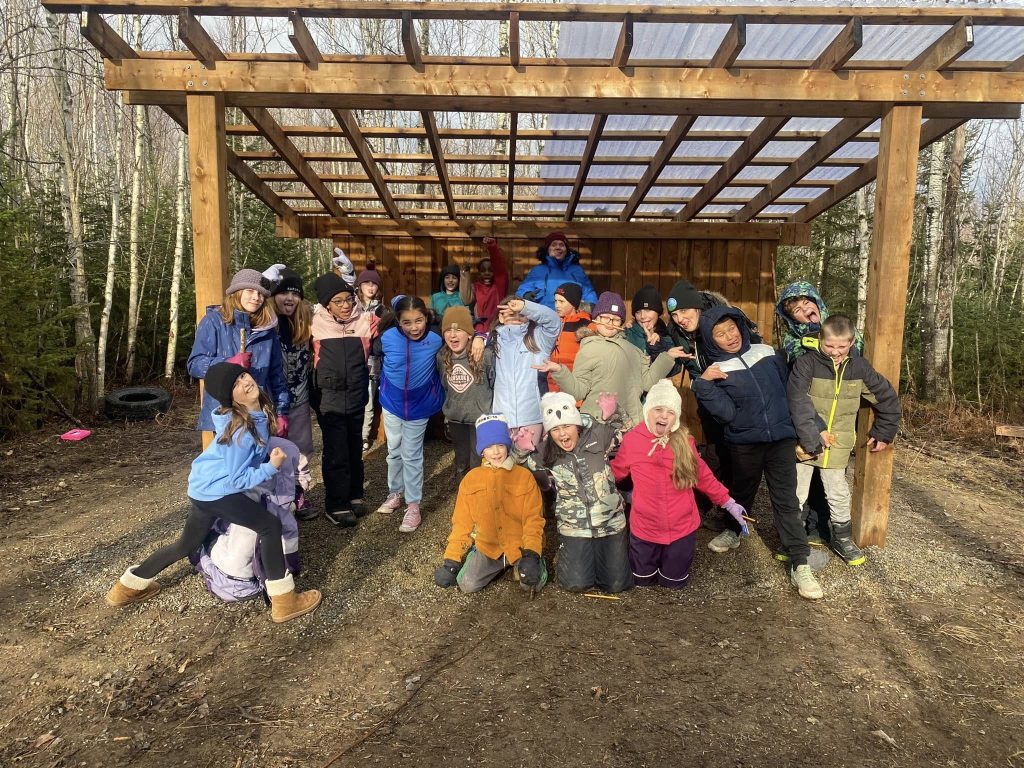
“We go outside in most weather. It’s awesome!”—Melodie Michaud-Theriault, Grade 4
“I like it better because you get fresh air, you can move around and be happy and proud when you achieve something.”—Cyruss Ahountsa Namekong, Grade 4
“I like going outdoors because it makes me feel calm and I like exploring nature and learning new things.”—Tyler Martin-Clavette, Grade 5
“I love this class because it’s not like an ordinary class where you just sit around, bored. Our class is outside a lot spring and fall, but even winter sometimes! We have lots of fun learning activities and we learn about culture a lot too.”—Kensley House, Grade 5
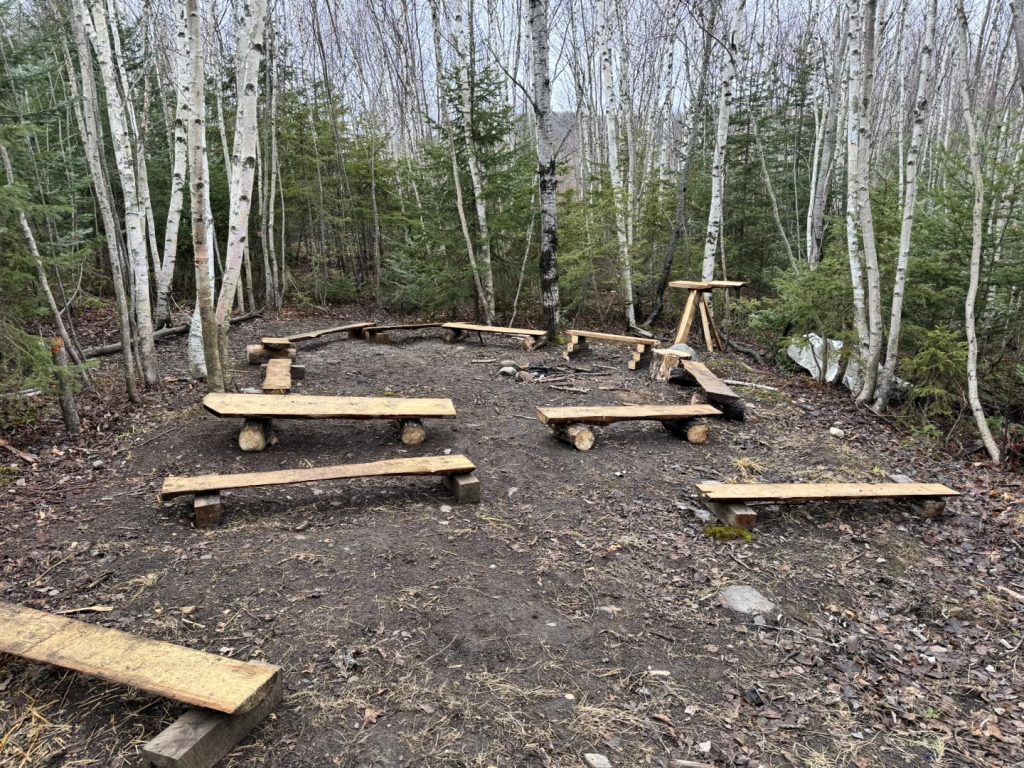
Meduxnekeag Consolidated School Teacher Lori Bird said she and her colleagues get ample usage out of the school’s outdoor classroom spaces, first introduced during the Covid pandemic. “We have three active outdoor classroom spaces in a wooded area beside our school, sectioned off into grade levels to allow for varied learning opportunities that are age appropriate. One of our spaces is for K-2, one for 3-5, and the third is for our middle school.”
Said Meduxnekeag Consolidated School Teacher Krista Webb, another graduate of CNAC’s Forest and Nature Practitioner’s Course, “I take my Kindergarten class out everyday for around one hour all year long and we do a variety of land lessons like sustainable harvesting of fiddleheads, birds/worm units, shelter building, First Nations education, compass use, and much more.”
“We have a Forest and Nature School handbook that our school uses, and a packet of lessons was developed and shared with staff to help support those wanting to take their students outside,” she said.
The popularity of the outdoor classrooms with teachers at the school over the past 2½ years has necessitated a booking system to schedule time in the spaces.
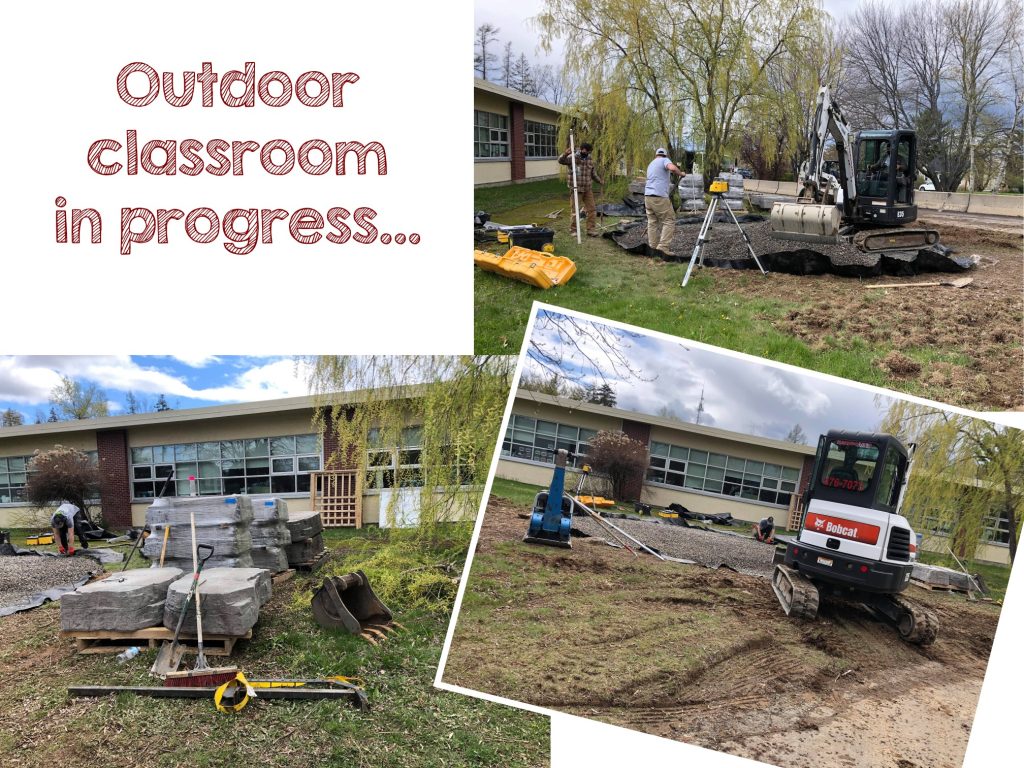
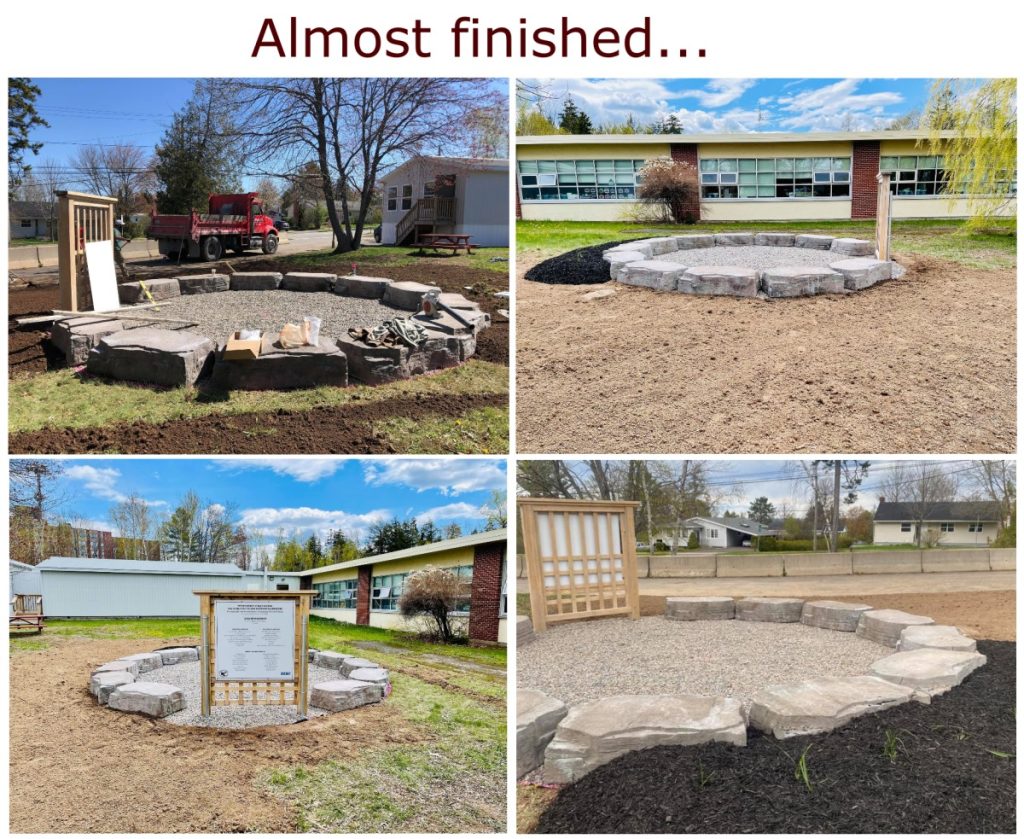
No (outdoor) classroom? No problem
Even in schools without dedicated outdoor learning areas, our teachers still make the most of New Brunswick’s outdoor spaces for learning.
Upper Miramichi Elementary School Principal Grant Ross encourages outdoor learning opportunities among his teachers, even though the school does not have a dedicated outdoor classroom.
“At UMES we are in a great rural location,” Ross said. “We have fields, woods with trails, and a river about a five-minute walk away. I encourage teachers to take their students outside in all seasons. Many do and often in the spring and fall use the trail and river for class sessions as well as play.”
In addition to a gazebo built three years ago with funds donated from the Rural Community of Upper Miramichi, the school does have an alcove area with whiteboards, benches, and picnic tables that it uses for outdoor lessons.
“Outdoor learning opportunities have been one of our school plan goals for years. It continues to be encouraged by all staff,” he said.
The same holds true for several of our other schools.
“We have a lot of space and would love to have an outdoor classroom,” said Florenceville Middle School Acting Vice-Principal Emily Keenan. “Teachers do spend lots of time outside with students when the weather is nice and we are close to the N.B. trail, but not an actual classroom.”
Assiniboine Avenue Elementary School Principal Lori Jones-Clark said, “We don’t have an outdoor classroom per say. We have a wooded area near the school in which classes engage in outdoor learning.”
And Principal Sean Newlands of Nackawic Senior High School said, “I wouldn’t say we have an official outdoor classroom used by the entire school, but we do have a great little learning area that our Outdoor Education class uses for a variety of outcomes: outdoor fires and cooking, knots, and plenty more. We’ve had this space for four or five years now.”
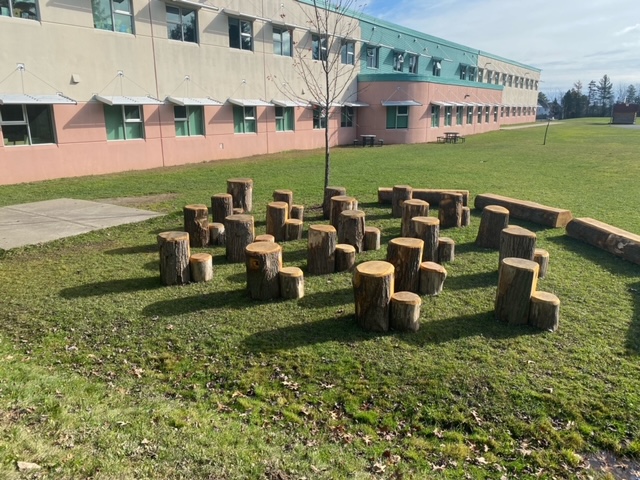
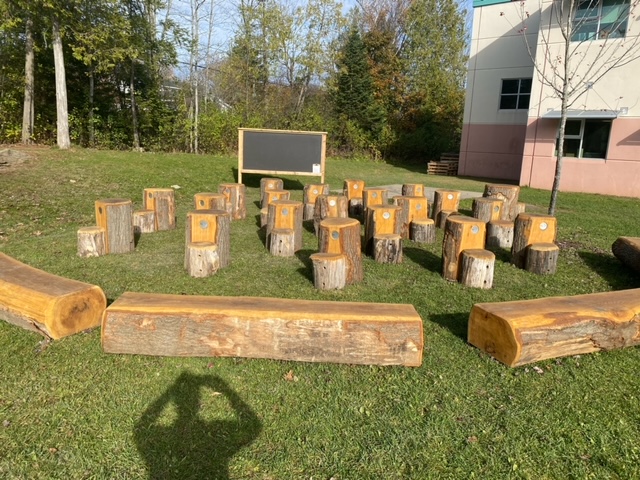
The future
While there is no overall district plan for adding dedicated outdoor classrooms to every school, many schools recognize the value of outdoor education and are adding the classrooms on their own.
New outdoor classrooms are in the works for Central New Brunswick Academy, Harvey High School, and Southern Victoria High School.
“There has been an increase in teachers taking their classes to these amazing spaces,” said Meduxnekeag Consolidated School’s Webb. “The more time students spend outside, the better.”

